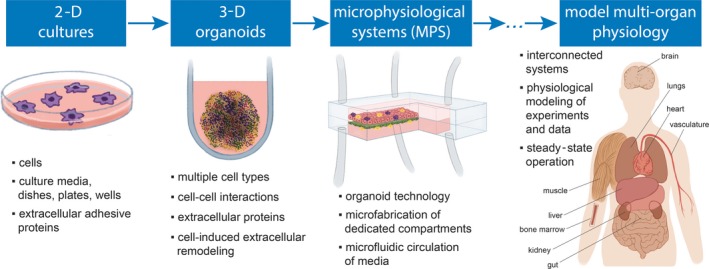Figure 1.

Microphysiological systems (MPS) as advanced platforms to model cellular properties in vitro. Petri dishes and similar two‐dimensional (2‐D) cell culture platforms have been used for almost a century as test beds for maintaining cell cultures and modeling the translation of their biological properties to clinical observations. More recently, spheroid technology has enabled the possibility of simultaneously coculturing different cell types that represent tissue‐specific cellular varieties in three‐dimensions (3‐D) configuration to recreate more physiologically relevant settings in vitro. For developing MPS, organoid‐like coculture approaches were integrated in microfluidic devices with the intent of further improving the physiological relevance of 3‐D cocultures, with the potential to also address several limitations related to lack of human‐specific properties of preclinical tests used in drug development. The field is fast evolving to the deployment of interconnected systems representing interorgan communications and the modeling of more physiologically relevant in vitro assays (63). Illustrations are inspired by different sources.89, 90 [Colour figure can be viewed at wileyonlinelibrary.com]
